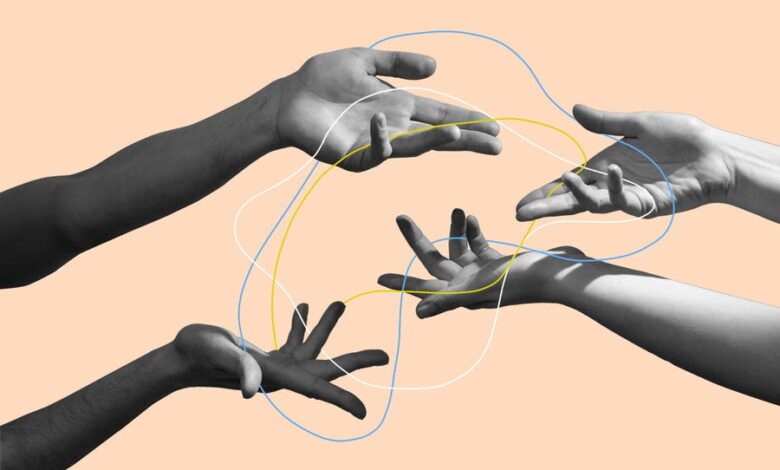The Reason Why Some Couples Have ‘Automatic Trust,’ By A Psychologist

📝 usncan Note: The Reason Why Some Couples Have ‘Automatic Trust,’ By A Psychologist
Disclaimer: This content has been prepared based on currently trending topics to increase your awareness.
Assuming good intent resists the reflex to treat every misstep as proof of betrayal and instead invests in the idea that most people are “trying,” even if imperfectly.
getty
In every relationship, there eventually comes a moment where your partner says something in a clipped tone, forgets to reply to a message or makes a decision without looping you in. In response, your stomach drops, your mind races and before you even realize it, you start creating a version of a story about what this “must” mean without any concrete evidence of it.
Interestingly, the human brain is built for this kind of analysis. From an evolutionary perspective, detecting threats quickly was essential for survival. In modern relationships, though, this same vigilance can work against us. A partner’s short tone isn’t necessarily a saber-toothed tiger, but our nervous system often reacts as if it is.
This is where “assumed good intent” becomes a relationship superpower.
Assuming good intent is not about wearing rose-colored glasses or excusing bad behavior. It’s about consciously choosing trust as your starting point. It’s like making an agreement with yourself that, unless proven otherwise, you will interpret your partner’s actions by either taking it at face value or through the lens of goodwill rather than suspicion.
It’s you repeating to yourself mentally that until you know the full story, you’ll believe they’re acting with care, even if the delivery is imperfect.
This approach reduces unnecessary activation of the threat-response system, which in turn lowers reactivity and protects relational safety.
Here are three factors that make assuming good intent so powerful.
1. It Disrupts The Downward Spiral
In heated moments of disagreement between couples, “negative sentiment override” can take over. Coined by relationship expert John Gottman, this is a state where negative assumptions about a partner become so dominant that even neutral or positive behaviors are interpreted as hostile.
A 2022 study aptly illustrates how this pans out in a relationship. If a spouse is late and not answering calls, someone in negative sentiment override automatically thinks, “He’s ignoring me on purpose,” whereas someone in a more positive perspective thinks, “I hope he’s okay, he usually answers.”
When negative sentiment override grips you, even small, fixable ruptures have the potential to easily snowball into Gottman’s “four horsemen” or predictors of divorce — criticism, contempt, defensiveness and stonewalling. This is where assuming good intent acts like an emotional circuit breaker.
Instead of reflexively filing the incident under “evidence that they don’t care,” you pause and consider alternative explanations such as “Maybe they were distracted,” “Maybe they’re stressed,” “Maybe this isn’t about me at all.”
This practice of reframing doesn’t erase the problem, sure. But it prevents it from escalating into a destructive cycle. In essence, it shifts you out of negative sentiment override and back into a more balanced, curious state, protecting the relationship from unnecessary damage.
2. It Reinforces The Emotional ‘Safe Zone’
Even when they disagree, couples can still experience emotional safety together. This is the assurance that, even when you and your partner clash, the relationship itself remains intact. In more securely attached couples, partners can voice needs and frustrations without fear of ridicule, retaliation or emotional abandonment.
Research published in PLOS One on the social contagion of generosity helps explain why this matters. When people directly receive help, they become more likely to extend generosity to others. But simply observing generosity without receiving it can sometimes dampen the impulse to give, because it creates the impression that “others are already doing enough.”
The same principle applies to relationships. When your partner directly experiences your trust through your choice to assume good intent, they’re more likely to reciprocate that generosity back to you. It becomes contagious. By contrast, if generosity is only implied or seen from a distance but not felt, it may not activate the same cycle of safety and openness.
These repeated experiences of trust create a self-reinforcing loop. You extend grace, your partner responds with softness and you both begin to internalize a sense of security. And when safety is high, repair after conflict becomes easier and faster because neither partner is in a state of constantly bracing for attack.
3. It Helps You See The Whole Picture
In the heat of conflict, our perspective gets narrowed significantly. This “tunnel vision” happens we zoom in on one behavior, like a shorter response from one’s partner than usual, and treat it as the entire truth: “They snapped, so they must be angry with me.” But that single moment is often just one pixel in a much bigger picture.
Interestingly, neuroscience can explain why this happens. For years, the amygdala was thought of as the brain’s fear center, wired mainly to detect threats. But newer studies suggest its broader role. Rather than simply signaling danger, the amygdala helps regulate how much we engage with what’s happening around us.
Under stress, it can push us to over-engage with the perceived “threat” in front of us, including automatic biological responses such as your partner’s sigh, their silence, their tone, all while under-engaging with the wider context, like their fatigue, work pressures or familial circumstances that might be bothering them.
This makes assuming good intent incredibly valuable because it acts as a corrective lens, encouraging you to widen your field of view. Instead of collapsing your interpretation into “This is about me,” you begin to ask, “What else could be influencing their mood today?”
This vital shift doesn’t dismiss your feelings, but it anchors them in a fuller reality. You are no longer reacting to a distorted snapshot of an incident, you’re responding to the whole, complex person in front of you. And that makes for fairer, more compassionate conversations.
How To Build This Habit Without Becoming Naive
You might be wondering if always assuming goodwill could make you naive or impervious to negative realities that may be playing out. However, if your partner has consistently displayed good character, it’s worth seeing the best in them.
Here’s how to hold a balanced perspective while assuming goodwill in others:
- Pause before you pounce. When something stings, give yourself a 10-second gap before responding. In that space, ask: “If I believed they meant well, how would I see this differently?”
- Distinguish patterns from anomalies. One-off slip-ups are often about circumstance. However, consistent disregard is a different matter. Assuming good intent works best when it’s grounded in a track record of trust.
- Lead with curiosity, not accusation. Replace “Why would you say that?” with “Can you help me understand what you meant?” This keeps the conversation open rather than adversarial.
- Address real harm directly. Assuming good intent doesn’t mean tolerating repeated hurt. It means starting from a place of trust while still holding onto your boundaries.
So, it’s not naive to assume good intent. It’s essential to the longevity and mutual understanding in your relationship to simply give each other the benefit of the doubt.
Is assuming good intent your way of keeping the peace, or a reflection of your emotional intelligence? Take the science-backed Emotional Quotient Inventory to find out.




